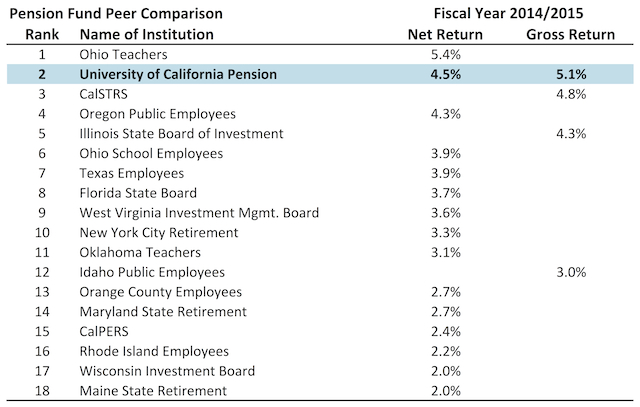The new investment team at the University of California (UC) has been very busy.
It has sold off roughly 100 private equity investments—bringing total relationships down to 40—along with all REITs, coal and oil sands stocks, a third of its active equities strategies, and more than 6,000 individual securities.
And the UC’s mission to streamline its $98.2 billion isn’t finished.
“We put the equities portfolio on a diet plan,” CIO Jagdeep Bachher—who is 15 months into the job—told his investment committee during a Wednesday meeting. “We went from 12,000 individual stocks to 5,700, and 60 active strategies down to 40. I could see it going down further.”
“Organizations with small staffs will have hundreds of private equity relationships, and they cannot possibly manage them.”
The overhaul aims to combat excessive diversification across the organization’s five funds: an endowment ($9 billion), defined benefit pension ($55 billion), defined contribution plan ($20 billion), and long-term and short-term working capital pools ($7.4 billion and $6.8 billion, respectively).
Furthermore, UC’s team saw the heady asset prices of the past fiscal year as an opportunity to take profits amid mounting global risks.
Liquidating $1.1 billion of real estate investment trusts (REITs), for example, earned the university system an extra $150 million relative to their current value.
Likewise for private equity, whose ultra-hot secondaries market allowed UC to sell off most of its investments without taking a haircut.
“We rationalized the private equity portfolio over the last 30 months,” Bachher said, noting that the process was underway before his tenure began. “We had tons of investments sub-$5 million in size. This represents a systemic problem for the industry: Organizations with small staffs will have hundreds of private equity relationships, and they cannot possibly manage them. That can create over-diversification, where you’re earning market returns at a very high price point.”
UC won’t be abandoning the asset class any time soon, however. Its $4.3 billion allocation outperformed both its benchmark and all other asset classes in the year ending June 30, 2015, with co-investments in particular driving returns. Potential partners, take note: Bachher predicted greater allocations in that style of private equity going forward.
His most minor sell-off announcement (by dollar value) drew the most attention, from both the investment committee and external parties. UC has dropped all $200 million or so of its direct coal and oil sands holdings, following the team’s long-term view on commodity prices, structural demand, technology, and regulation. Economics ultimately delivered what an aggressive student-led divestment campaign hadn’t, although it is worth noting that UC explicitly factors sustainability into investment decisions.
The UC endowment’s 7.2% returns in FY2015 ranked it 9th among peers, thus far.
In comparison, UC’s largest reform—a total overhaul of the second-largest public defined contribution plan in America—arrived with little fanfare. COO Arthur Guimaraes took on the $20 billion defined plan and its 192 individual investment options, and cleared the deck. Members now have 16 to choose from, or default into custom target-date funds. And once again, the streamlining isn’t finished. According to Bachher, his team aims to implement automatic enrolment in the future.
For the fiscal year as a whole, UC’s absolute net returns came in substantially lower than last year, but stacked up well next to peers. In 2014, bull markets had driven gains of 18.7% in the endowment and 17.4% for the pension—more than double the respective 7.2% and 4.5% earned this year.
These latest endowment returns placed UC 9th among peers reporting by September 8. The pension’s 4.5% topped all its counterparts except the State Teachers’ Retirement System of Ohio. Bachher predicted final peer-group results will place UC in the top quartile for endowments and top decile of public pensions.
“This is the beginning of a new culture of the Office of the CIO,” Bachher concluded. “If you build a strong culture and set of values, and as an organization focus every day on those, the results will come.”

Related:U. California Hires Risk Guru Rick Bookstaber & UC Stacks Talent with Another CIO Hire
